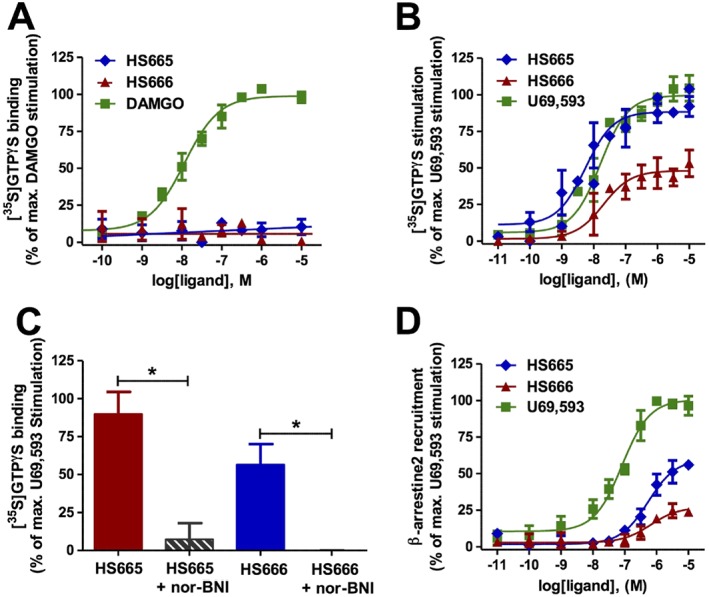Figure 6.

In vitro functional activity of HS665 and HS666. (A) Stimulation of [35S]‐GTPγS binding to the human μ receptor by HS665, HS666 and DAMGO determined in the [35S]‐GTPγS binding assay with membranes from CHO‐hμ receptor cells. The data were normalized to the maximum stimulation caused by DAMGO (100%) (n = 3 independent experiments). (B) Stimulation of [35S]‐GTPγS binding to the human κ receptor by HS665, HS666 and U69,593 determined in the [35S]‐GTPγS binding assay with membranes from CHO‐hκ receptor cells. The data were normalized to the maximum stimulation caused by U69,593 (100%) (n = 5 independent experiments). (C) Selective κ receptor‐mediated G protein activation by HS665 and HS666. Significant antagonism by nor‐BNI (0.1 μM) of the [35S]‐GTPγS binding stimulated by HS665 (1 μM) or HS666 (1 μM) determined in the [35S]‐GTPγS binding assay with membranes from CHO‐hκ receptor cells. The data were normalized to the % stimulation induced by 10 μM U69,593 (100%) (n = 5 independent experiments). Significantly different from the stimulation with HS665 or HS666 alone, *P < 0.05, one‐way ANOVA followed by Tukey's post hoc test. (D) Concentration–response curves of HS665, HS666 and U69,593 for β‐arrestin2 recruitment to the human κ receptor expressed in U2OS–β‐arrestin2 cells using the PathHunter β‐arrestin2 assay. Responses were normalized to the maximum effect of U69,593 (100%) (n = 3 independent experiments). All data are presented as the mean ± SEM.
